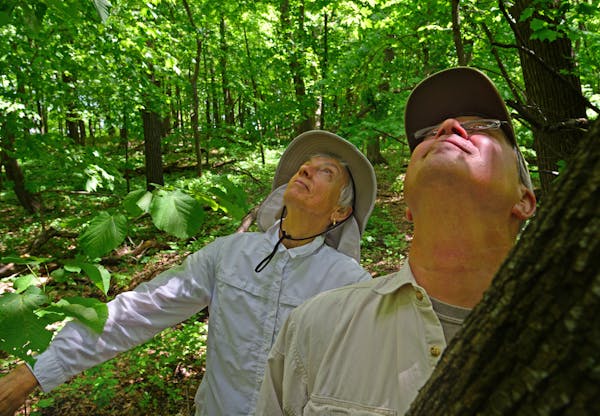Facing strong public opposition, the Minnesota Department of Natural Resources is scaling back a plan to open more rare ecological sites to hunting and trapping.
Steve Hirsch, director of the DNR's Ecological and Water Resources Division, said public comments this year have run decidedly against making Scientific and Natural Areas (SNAs) around the state more accessible to hunters. Early this year, the DNR held public hearings on expanded land use proposals for 10 of 159 areas. Similar plans for next year have been dropped, he said.
"We certainly have to take a pause now,'' Hirsch said.
Based on public input, no changes will be made to eight of the 10 areas that were up for review this year, Hirsch said. But the DNR is still proposing to open Lake Alexander Woods SNA north of Cushing to deer hunting and to allow dogs on leashes at Minnesota Point Pine Forest SNA in Duluth, he said. Before the two proposed changes are approved, the DNR will continue to accept public comment until Sept. 2.
Hirsch said part of the rationale for opening Lake Alexander Woods to hunting is to thin the deer population to protect against over-browsing of trees and plants.
Bob Djupstrom, a retired DNR employee who formerly headed the 40-year-old SNA program, said he'll watch closely to make sure the DNR doesn't encroach further on the 18,300 acres of SNA lands where hunting, trapping, dog walking and other recreational uses are forbidden.
There are now about 189,000 acres of SNA lands, 90 percent of which are open to some form of hunting, trapping or fishing. But on the parcels that are still protected, only the lightest human touch is permitted. Camping, picnicking and swimming are not allowed, for example. Visitors can't walk dogs or pick berries. They can take photographs or simply walk or sit in the woods to look and listen.
"These are jewels of the natural world,'' Djupstrom has said. "They should be left alone."
Peggy Booth, the DNR's current SNA program supervisor, said she thought hunting could be expanded while still protecting the natural resources.
"The process worked as intended," she said. "We asked for input and most people told us they didn't want changes in these areas."
The idea was to boost the popularity of the SNA program and attract funding for expansion, the DNR said in a news release. In recent years, funding for the SNA program has declined, in part because the Legislature has tied funding for the program to the interests of sportsmen.
Hirsch said keeping SNA lands closed to hunters "might hurt our access'' to Legacy Amendment funds, which he described as the best potential source of program support over the next 20 years.
Djupstrom and another ex-DNR worker, Ellen Fuge, have been complaining to state legislators that the agency has overstepped its authority since 2012 by opening several SNA lands around the state to hunting and trapping with only minimal input from taxpayers and without legislative hearings.
"I'm glad to see they are pausing,'' Djupstrom said Tuesday.
The DNR said it followed the legislatively prescribed process for obtaining and considering public input before modifying allowed uses on existing SNAs.
Minnesota SNAs originated in 1974 to isolate and preserve pieces of the state's natural heritage, including rare and endangered plant species, animals and unique geologic features. An internal review document produced by the SNA program in May said the state aims to add 136,000 acres to the SNA program over the next 85 years, boosting total acreage to 325,000 acres at approximately 300 sites.
The DNR also manages a much larger program of public hunting land called state Wildlife Management Areas.
Tony Kennedy • 612-673-4213

Minneapolis reaches $150k settlement with eyewitness of George Floyd's murder

Israel-Hamas war creates 'really fraught times' at Minn. colleges

Rare and fatal brain disease in two deer hunters heightens concerns about CWD

